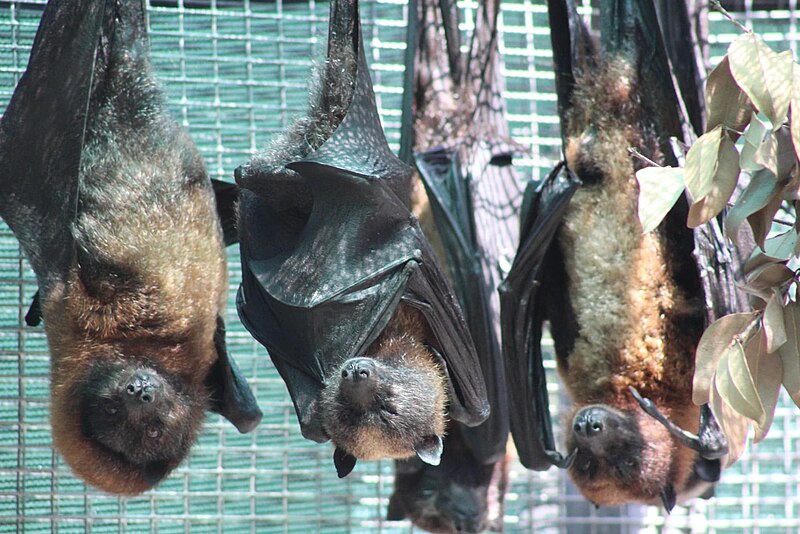Yes, bats can carry rabies, but not all bats are infected. Understanding the risks and how to stay safe is crucial.
Bats often get a bad rap, thanks to their eerie nighttime flights and association with spooky tales. But did you know that these fascinating creatures play a vital role in our ecosystem, from pollinating plants to controlling pesky insects? However, there’s one question that frequently pops up whenever bats are mentioned: “Do bats carry rabies?” It’s a valid concern and one that stirs up quite a bit of anxiety, especially if you find yourself unexpectedly sharing your home with one of these winged visitors.
Rabies is a word that can send shivers down anyone’s spine. The thought of a deadly virus transmitted by a mere bite or scratch is enough to make anyone wary. And while it’s true that bats can carry rabies, it’s important to separate fact from fiction. Not every bat you see is a potential rabies carrier, and with the right knowledge, you can safely navigate any bat encounter without losing your cool.
Key Takeaways
- Bats can carry and transmit rabies.
- Most bats are not infected, but rabies cases can be serious.
- Understanding how rabies is spread helps in prevention.
- Simple precautions can significantly reduce the risk of rabies transmission.
Understanding Rabies in Bats
What is Rabies?
Rabies is a viral disease that affects the central nervous system of mammals, including humans. It’s primarily spread through the saliva of infected animals via bites or scratches. Once symptoms appear, rabies is almost always fatal, making it a serious health concern.
Incidence of Rabies in Bats
You might be relieved to know that while bats can carry rabies, the incidence is relatively low. According to the Centers for Disease Control and Prevention (CDC), only a small percentage of bats tested for rabies are found to be infected. However, because bats are common carriers of the virus, it’s essential to approach them with caution.
Symptoms of Rabid Bats
So, how can you tell if a bat has rabies? Rabid bats often exhibit unusual behavior. They might be active during the day, unable to fly, or found in places where they normally wouldn’t be, like your living room or backyard. Other signs include aggression, paralysis, or an inability to maintain balance. If you see a bat displaying any of these symptoms, it’s best to keep your distance and contact wildlife control professionals.

What To Do If You Encounter a Bat
Encountering a bat can be a surprising experience, especially if it happens up close and personal. Whether you find one flapping around your living room or hanging out in your attic, knowing how to handle the situation calmly and effectively is key. Here’s a step-by-step guide on what to do if you come across one of these mysterious night fliers.
Stay Calm
First things first: stay calm. Bats are generally not aggressive and will usually try to avoid human contact. Panicking can lead to unnecessary stress for both you and the bat. Take a deep breath and assess the situation.
Avoid Contact
It’s crucial to avoid direct contact with the bat. Remember, while the incidence of rabies in bats is low, it’s still a risk you don’t want to take. If the bat is inside your home, try to confine it to one room by closing the doors. Open windows to give it an easy escape route. Use gloves or a towel if you must handle anything the bat has touched, but never try to catch it with your bare hands.
When to Seek Help
Sometimes, professional help is the best course of action. If the bat doesn’t leave on its own, or if it’s in an area where you can’t safely manage the situation, call in wildlife control experts. They have the tools and expertise to handle bats safely and humanely. Additionally, if there’s any chance that someone was bitten or scratched by the bat, seek medical advice immediately.
Preventive Measures
Prevention is always better than cure, especially when it comes to potential encounters with rabid bats. Taking proactive steps can significantly reduce the chances of coming into close contact with bats, ensuring both your safety and that of your loved ones. Here are some practical preventive measures to keep those uninvited nocturnal guests at bay.
Vaccination for Pets
One of the most effective ways to protect your household is by ensuring your pets are up-to-date on their rabies vaccinations. Dogs, cats, and even ferrets should receive regular rabies shots as recommended by your veterinarian. This simple step can act as a robust defense, safeguarding your furry friends from potential rabies exposure.
Securing Your Home
Bats can squeeze through incredibly small openings, so bat-proofing your home is crucial. Inspect your home for any gaps, cracks, or holes, especially around windows, doors, eaves, and roofs. Seal any potential entry points with caulk, steel wool, or weather stripping. Installing screens on windows and chimney caps can also prevent bats from finding their way inside.
Personal Safety Tips
When spending time outdoors, especially during dusk and dawn when bats are most active, take some basic precautions. Avoid wearing strong perfumes or fragrances that might attract insects, and by extension, bats. If you see a bat flying near you, remain calm and avoid making sudden movements. Educate your family members, especially children, about the importance of not touching bats or other wild animals.
What To Do If You Are Bitten by a Bat
Despite your best efforts to avoid them, accidents can happen. If you or someone you know is bitten by a bat, it’s crucial to act quickly and efficiently. Rabies is a serious disease, and prompt action can make all the difference. Here’s a straightforward guide on what to do if you find yourself in this situation.
Immediate Actions
The moment you realize you’ve been bitten by a bat, it’s essential to wash the wound thoroughly with soap and water for at least 15 minutes. This can help reduce the risk of infection. After cleaning the bite, apply an antiseptic to the wound. Keeping the area clean is the first step in preventing any potential infection.
Seeking Medical Attention
No matter how minor the bite may seem, it’s imperative to seek medical attention immediately. Contact your healthcare provider or go to the nearest emergency room. Inform the medical professionals that you’ve been bitten by a bat, as this information is crucial for them to provide the appropriate care. They may recommend a series of rabies vaccinations, known as post-exposure prophylaxis (PEP), which are most effective when administered as soon as possible after exposure.
Post-Exposure Prophylaxis (PEP)
PEP is a series of rabies vaccinations given over a few weeks. It’s designed to prevent the virus from progressing if administered promptly after exposure. The treatment typically includes a dose of rabies immune globulin and a series of rabies vaccines. While the prospect of multiple shots might sound daunting, it’s a necessary measure to ensure your health and safety.
Myths and Facts About Bats and Rabies
Bats are often shrouded in mystery and misunderstanding, leading to a plethora of myths about these fascinating creatures and their connection to rabies. Separating fact from fiction is crucial, not only for your peace of mind but also to foster a better understanding of these important members of our ecosystem. Let’s dive into some of the most common myths and uncover the real facts about bats and rabies.
Common Myths
One of the most pervasive myths is that all bats carry rabies. While bats can indeed carry the rabies virus, the reality is that only a small percentage of bats are actually infected. Another common misconception is that bats are aggressive and will attack humans. In truth, bats are typically shy and prefer to avoid human contact. They will only bite in self-defense if they feel threatened.
Fascinating Facts
Contrary to popular belief, bats play a vital role in our ecosystem. They are incredible insect controllers, consuming vast quantities of pests that can harm crops and spread diseases. Additionally, many species of bats are pollinators, aiding in the reproduction of various plants and contributing to biodiversity. Understanding these positive aspects can help dispel the negative stereotypes often associated with bats.
Debunking the Myths
Debunking these myths is important for both public health and wildlife conservation. By understanding that not all bats carry rabies and that they are not inherently aggressive, we can approach these creatures with the respect and caution they deserve. This knowledge also emphasizes the importance of not harming bats unnecessarily and recognizing their ecological significance.
Promoting Coexistence
Education and awareness are key to promoting coexistence with bats. By learning the facts and dispelling the myths, we can reduce fear and encourage safe practices when encountering bats. This balanced perspective allows us to appreciate the essential role bats play in our environment while taking appropriate measures to protect ourselves from any potential risks.
Conclusion
We’ve journeyed through the fascinating and sometimes misunderstood world of bats and their connection to rabies. From understanding what rabies is and recognizing the symptoms of a rabid bat to knowing exactly what to do if you encounter a bat or, worse, get bitten by one, we’ve covered all the bases. We’ve also debunked some common myths and highlighted the vital role bats play in our ecosystem.
Bats may seem mysterious, but with the right knowledge and precautions, there’s no need to fear these nocturnal flyers. By staying informed and prepared, you can protect yourself and your loved ones while appreciating the ecological benefits bats provide. Remember, the key is to stay calm, avoid direct contact, and seek professional help when necessary.
So, the next time you see a bat swooping through the night sky, you’ll know exactly what to do. Armed with this information, you’re ready to handle any bat-related situation with confidence and ease. Stay safe, stay informed, and let’s continue to coexist peacefully with our winged neighbors.














